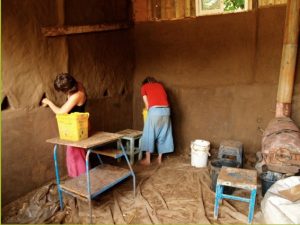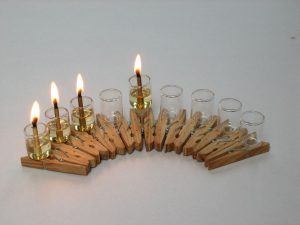 Cooking and baking are one way that Jews celebrate the Purim holiday of salvation.
Cooking and baking are one way that Jews celebrate the Purim holiday of salvation.
Jews celebrate the holiday of Purim on the 14th day of Adar II, which falls this year on the evening of Saturday, March 19 until sunset on March 20. In Jerusalem and other ancient walled cities, the one-day celebration begins Sunday evening and is known as Shushan Purim (see Esther 9:18-19). Purim commemorates the events of the biblical book of Esther, which describes how the beautiful and noble Queen Esther and her uncle Mordechai foil the evil Haman’s plan to destroy the Jewish people of the 127 nations in the ancient Persian Empire.
Like most Jewish holidays, Purim involves spending time in the synagogue, in this case reading the Scroll of Esther in the morning and the evening. And it also involves food–a festive meal during the day, as well as sending gifts of food to friends.
These packages, known as mishlochei manot, traditionally contain two different kinds of food. Finally, Jews are obligated to give charity to the needy and you will see beggars greeting worshippers as they leave the synagogue in the morning–observant Jews figure it’s best to give to a few poor people just to make sure the money gets where it’s supposed to. How can your Purim be green?
The best-known Purim tradition, dressing in costume, doesn’t have roots in the Bible. But Purim is all about hidden identities, particularly Esther who kept her Jewish background a secret from her husband, the king Ahashverosh. There’s also a hint of hidden-ness in the traditional holiday food, hamantashen, the triangular-shaped cookies with filling peeking out.
Purim is a communal celebration–you start to see the festivity a few days before the holiday when all the children dress in costume for the school parties. On Purim itself, the religious Jewish neighborhoods bustle with activity between attending synagogue and distributing packages and charity, and going to family and friends for the Purim meal. In Israel and around the world, the festive reading of the Megillah (biblical scroll) with the stamping out of the evil Haman’s name with noisemakers attracts a large crowd.
Instead of store bought costumers, try making creative ones from things found around the home.
In some communities Purim has become materialistic, with elaborate mishlochei manot sent to huge numbers of people. They are more to impress more than to commemorate the holiday. The food inside consists of processed snack foods, and even the costumes are cheap and uncreative. Sending a mishloach manot package is a good way to welcome a new neighbor or thank a child’s teacher. You can think of some green ideas to educate your children in the food packages, maybe by using recycled baskets, and wrap and sending home-made treats with organic ingredients.
The festive meal, known as “Seudat Purim,” is an opportunity for families who don’t see each other often to get together, as there are no travel restrictions like there are on the Sabbath and most Jewish holidays. So throw on a costume and pack up some hamantashen, or some chumus, pita and fruit, to send to your friends. Or invite your neighbors over for a pot luck meal to celebrate the continued survival of the Jewish people.
More posts on “Green” Judaism at Green Prophet:
Breastfeeding and Judaism: Why Moses Mother Didn’t Put a Bottle in the Ark of Bulrushes
Celebrate Tu Beshevat, the New Year of the Trees
Israel Breathes Easy on Yom Kippur Day







Comments are closed.